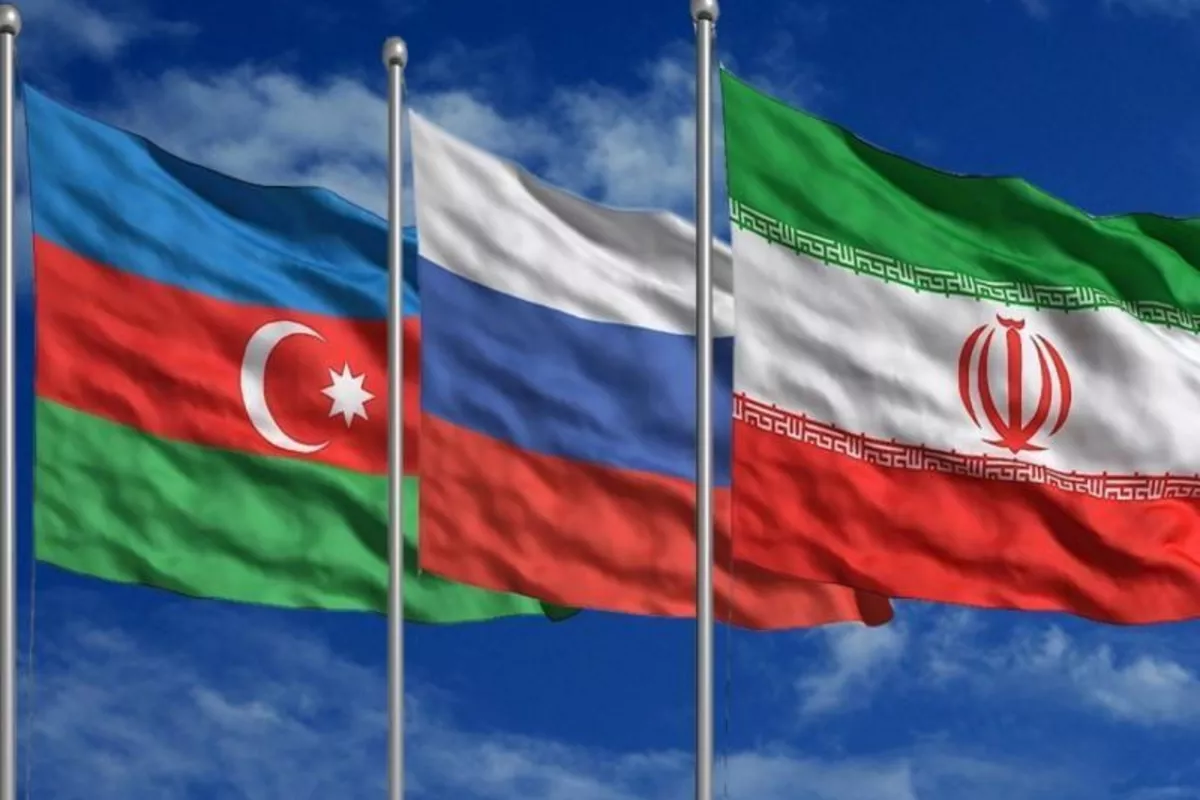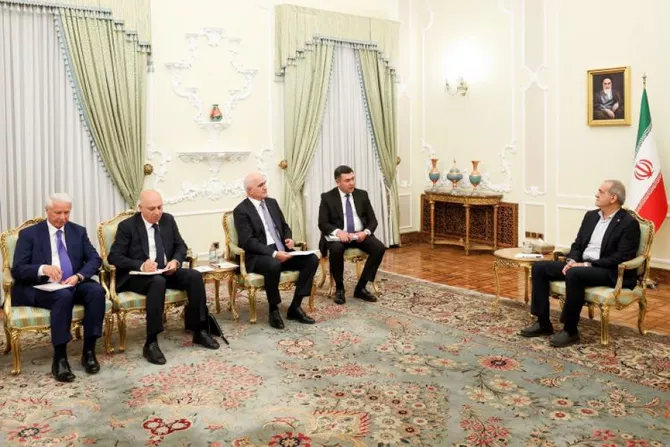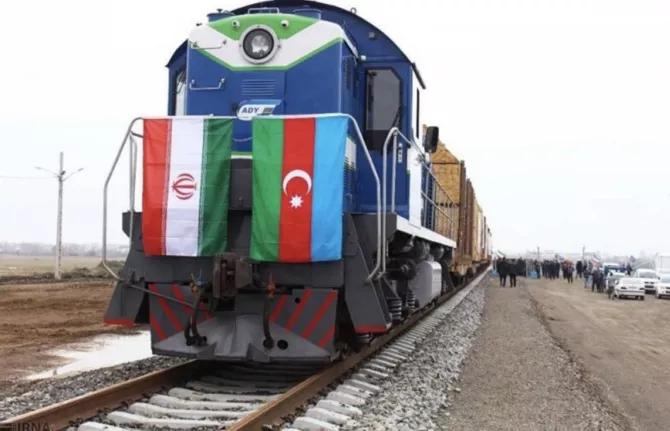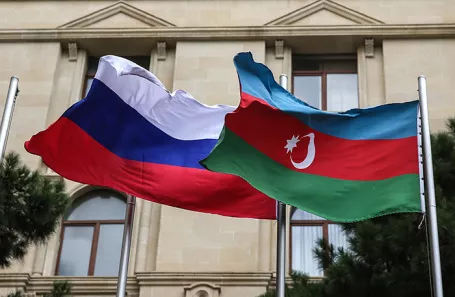
Photo credit: Azernews
In recent months, relations between Azerbaijan and Iran have entered a new phase, demonstrating a noticeable improvement after years of tension and mistrust. This shift is more than just symbolic diplomacy; it reflects profound changes in the geopolitical landscape of the South Caucasus and the broader region. The clearest sign of this thaw came during the recent visit of an Azerbaijani delegation to Iran, led by Deputy Prime Minister Shahin Mustafayev.
Photo: Azertac
The delegation held high-level talks in Tehran with Iranian President Masoud Pezeshkian and Secretary of the Supreme National Security Council Ali Larijani. These meetings focused on strengthening economic ties and advancing joint infrastructure projects, but they also carried deep political significance. Both sides emphasized the importance of building a stable, mutually beneficial partnership based on shared interests rather than past grievances. This is a remarkable turnaround considering that only a few years ago, relations were marred by mutual accusations, border tensions, and competing regional ambitions.
At the heart of these discussions were ambitious transport initiatives that could redefine trade flows across Eurasia. Key among them are the North-South and East-West corridors, along with the Araz Corridor - a joint Azerbaijan-Iran project that has the potential to transform both countries into vital transit hubs. These routes are not merely about railways and roads; they represent strategic connectivity that links markets from India and the Persian Gulf to Russia and Northern Europe. For Azerbaijan, participation in these projects solidifies its role as a bridge between Asia and Europe. For Iran, they provide access to new economic opportunities and help counterbalance its international isolation.
Deputy Prime Minister Mustafayev also met with Iran’s Minister of Roads and Urban Development, Farzaneh Sadegh. Their talks were more technical, focusing on the current state of bilateral cooperation and future plans. Special attention was given to the implementation of a Memorandum of Understanding signed at the last session of the State Commission on Cooperation between Azerbaijan and Iran in the economic, trade, and humanitarian spheres. These agreements cover a wide range of joint initiatives - from infrastructure construction to cultural exchange - and symbolize the broadening scope of the partnership.
The results of these meetings suggest a strategic recalibration by Tehran. Iran appears to have accepted the new geopolitical realities in the South Caucasus following the Second Karabakh War and Azerbaijan’s restoration of its territorial integrity. Instead of opposing these developments, Iran is now seeking to leverage them for its own benefit. Central to Tehran’s strategy is the North-South Transport Corridor, a project with enormous economic and political potential. This corridor aims to connect Iranian railways with those of Azerbaijan and Russia, creating a seamless transport link from the Persian Gulf to Northern Europe.
Russia’s commitment to this initiative highlights its importance. Moscow has agreed to finance and construct the missing Rasht-Astara railway segment inside Iran, providing a €1.3 billion loan for the project. Beyond this, Iran hopes that Russia will help modernize its outdated railway infrastructure, further integrating it into the Eurasian transport network. In this context, Azerbaijan becomes a critical linchpin. Without cooperation with Baku, neither Tehran nor Moscow can fully realize the corridor’s potential. This geopolitical reality is pushing Iran to improve relations with Azerbaijan, despite lingering tensions and competing regional interests.

Photo credit: Azernews
One of the most significant announcements to emerge from the recent visit was Minister Sadegh’s statement about an upcoming trilateral meeting between delegations from Azerbaijan, Iran, and Russia, scheduled for October in Moscow. Given the current priorities of all three countries, it is expected that the meeting will focus primarily on advancing the North-South Corridor. The very fact that Iran initiated this trilateral dialogue is telling. It reflects a pragmatic desire to create a structured platform for addressing complex infrastructure and trade issues, while setting aside political disputes that have historically hindered cooperation. This approach could serve as a model for regional diplomacy, where economic interests take precedence over ideological divides.
Energy cooperation adds another layer of complexity to this evolving relationship. Tehran and Moscow have ambitious plans for the transportation of Russian natural gas to Iran through Azerbaijani territory. This idea moved closer to reality in January, when an agreement was signed in Moscow during President Pezeshkian’s visit. In the initial phase, the plan envisions using Azerbaijan’s existing pipeline infrastructure to transport 1.8 to 2 billion cubic meters of Russian gas annually to Iran. Over time, the project could expand dramatically, with the construction of a new dedicated pipeline and an increase in volumes up to 50 billion cubic meters per year.
For Iran, this project is of strategic importance. It aligns with Tehran’s goal of becoming a regional gas hub, allowing it to both meet domestic energy needs and re-export gas to other markets. For Russia, facing Western sanctions and limited access to European markets, Iran offers a valuable alternative route for its energy exports. The initiative could fundamentally reshape the regional energy map, but its success hinges on one crucial factor: Azerbaijan’s role.
So far, Baku has not made its position on this matter public. The Azerbaijani government has remained silent on whether it will permit the use of its territory for the transit of Russian gas to Iran. This ambiguity is particularly striking given the current strain in Azerbaijan-Russia relations, which has been exacerbated by disagreements over regional security and diplomatic priorities. Without Azerbaijan’s active participation, the project cannot move forward, leaving its future uncertain.

Photo credit: TASS
This is why the upcoming trilateral meeting in Moscow is so critical. It represents an opportunity for all three countries to clarify their positions, negotiate compromises, and establish a roadmap for cooperation. If they can reach a mutually beneficial agreement, the implications will be profound. The North-South Corridor could become a reality, new energy routes could emerge, and the broader region could see a shift toward greater economic interdependence. On the other hand, failure to resolve differences could stall these initiatives indefinitely, reinforcing existing geopolitical fault lines.
The stakes are high. For Iran, success would mean breaking out of its economic isolation and gaining leverage in its regional diplomacy. For Russia, it would provide a lifeline for its energy exports and deepen its strategic footprint in the South Caucasus. For Azerbaijan, it offers a chance to cement its role as a pivotal connector between major powers, while also advancing its own economic development.
As these dynamics play out, the October meeting in Moscow will serve as a crucial test. Will pragmatism prevail over rivalry? Can economic imperatives override political mistrust? The answers to these questions will shape not only the future of Azerbaijan-Iran relations but also the balance of power across Eurasia. For now, observers can only wait and watch as the three nations prepare to take the next decisive steps in this unfolding geopolitical drama.
By Asif Aydinly
Share on social media